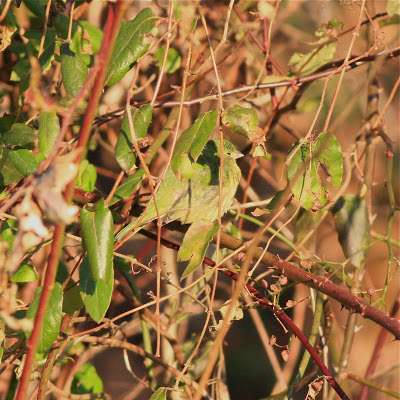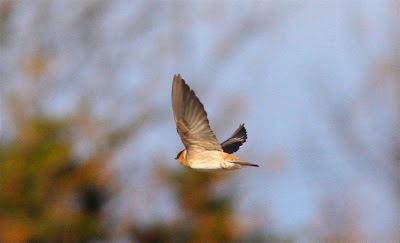STATS:
- I birded (as in posted one or more eBird checklists) on 285 days in 2012. This may be a bit of an understatement as I wasn't aways as good an eBirder as I should be.
- I saw 361 species in New York State.
- That was 95.5% of the 378 species seen this year in New York State. Which means I missed 17 species seen by others.
- With a little more effort and organization, I should have been able to get 4 or 5 more. With luck, who knows - I do believe that 375 is possible in a year in New York State.
- I cheated in New York State only 4 times - Brown Booby and Crested Caracara in New Jersey, Wood Sandpiper (dipped) in Rhode Island, and a week in the Turks & Caicos.
- I birded in 34 of New York State's 62 counties and drove through a bunch more. Even though I got around a fair bit, the bulk of my birding time was really concentrated in three areas - New York City/Long Island, the Adirondacks/St. Lawrence, and the Montezuma/Rochester area. Almost all the birds I saw this year were in one of these three 'corners' of the State.
- I drove approximately 40,000 miles by car, and took 10 boat trips in search of birds.
- I stayed in a lot of Marriott Hotels, and ate way too much food at Service Areas on I87 and I90.
- I have still never seen Niagara Falls or been to the Statue of Liberty.
 |
| Connecticut Warbler turned out to be quite easy this year. |
THE MISSES
Despite everyone thinking that I "saw everything" I actually missed a lot. Some birds I couldn't really try for but there were plenty of "Dips" where I drove, often many hours, and failed to see a bird reported previously by others (Sharp-tailed Sandpiper in Rochester, Franklin's Gull in Niagara, White Pelican near Buffalo, Slaty-backed Gull at Newburgh, Brown Pelican on Staten Island, Pink-footed Goose on Long Island, Le Conte's Sparrow in Brooklyn, Le Conte's Sparrow near Ithaca, Say's Phoebe on Fire Island, Scissor-tailed Flycatcher on Jones Beach, Gray Partridge near Perch River, etc., etc.). There were also birds I spent a lot of time looking for and did not see; three in particular absorbed huge numbers of miles, hours, and mosquito bites (Yellow Rail, Black Rail and Gray Partridge). And then there are the birds that I could have seen but didn't get to for logistical reasons (Red Phalarope, Northern Fulmar, Atlantic Puffin, etc.). No-one can see everything but I certainly had my share of heart-breaking misses....
THE 'NON-BIRDS'
Despite everyone thinking that I "saw everything" I actually missed a lot. Some birds I couldn't really try for but there were plenty of "Dips" where I drove, often many hours, and failed to see a bird reported previously by others (Sharp-tailed Sandpiper in Rochester, Franklin's Gull in Niagara, White Pelican near Buffalo, Slaty-backed Gull at Newburgh, Brown Pelican on Staten Island, Pink-footed Goose on Long Island, Le Conte's Sparrow in Brooklyn, Le Conte's Sparrow near Ithaca, Say's Phoebe on Fire Island, Scissor-tailed Flycatcher on Jones Beach, Gray Partridge near Perch River, etc., etc.). There were also birds I spent a lot of time looking for and did not see; three in particular absorbed huge numbers of miles, hours, and mosquito bites (Yellow Rail, Black Rail and Gray Partridge). And then there are the birds that I could have seen but didn't get to for logistical reasons (Red Phalarope, Northern Fulmar, Atlantic Puffin, etc.). No-one can see everything but I certainly had my share of heart-breaking misses....
THE 'NON-BIRDS'
During the year I did see quite a few other vertebrate species (I really don't keep lists on invertebrates). Among the mammals I saw a Northern Right-Whale, several Humpback Whales, a Minke Whale and lots of Common and Bottle-nosed Dolphins. I also had a Black Bear, several Coyotes, Red and Gray Foxes, and lots of smaller critters. I saw surprisingly few herps, which suggests perhaps that herp-watching requires a different focus from bird-watching. Among the best things herp-wise were four species of Sea-Turtle (Leatherback, Green, Loggerhead and Kemp's Ridley), my life (!) Wood Turtle, and the scarce Eastern Tiger Salamander. I didn't really keep a 'fish list' but several breaching Basking Sharks were quite a spectacle as were a group of Bluefin Tuna feeding on baitfish on the surface.
THANK YOU
In no particular order, big thanks to the many people who helped in some way with the big year (if I forgot you, I didn't mean too, I'm just tired). So thanks Andrew Baksh for finding me a bunch of birds and keeping on my case as I flagged this Summer. To Greg Lawrence for the Niagara Frontier, and Joan Collins for the Adirondacks. To Richard Fried for being such a good egg all year as I chased and then beat his hard-fough record. To Corey Finger, Benjamin Van Doren, Angus Wilson, Shai Mitra, Patricia Lindsay, Tom Burke, Isaac Grant, Peter Polshek, Jim Ash, Hugh McGuiness, Andy Guthrie, Derek Rogers, Bob Adamo, Willie D'Anna, Paul Guris, Jacob Drucker, Larry Master, Mark Manske, Chris Wood, Jay McGowan, Matt Young, Luke Tiller and the many, many other birders who shared information or helped with advice and counsel. To the eBird reviewers for putting up with my onslaught of records from all over the state and my utter lack of expertise in all sorts of places. To Steve N G Howell, Ned Brinkley and Michael O'Brien for the seabird help. To Philip Dempsey and Michael Duffy for being enablers and producing bourbon and bacon at strategic moments. And last of course to my partner Ryan for putting up with the insane goat-rodeo that a big year inflicts on a home and family life - I promise, I'm done.
As I write this it's getting dark in NorthWest Harbor so, unless a very loud Boreal Owl starts calling right next to the window, I am done for the year. And so on to 2013 ...
[A Summary of the Big Year - including the highs and low, the euphoria and the despair, can be found in four parts in previous posts.]
















































